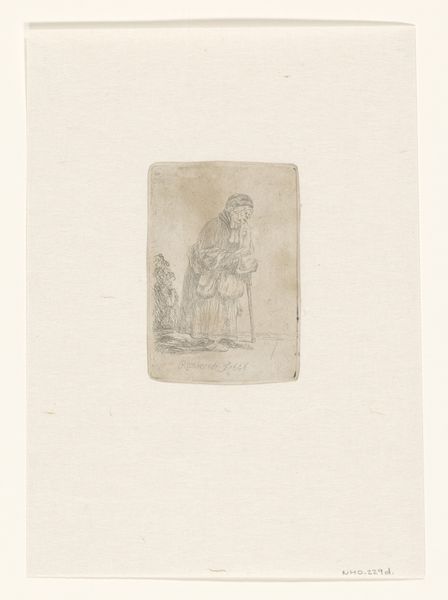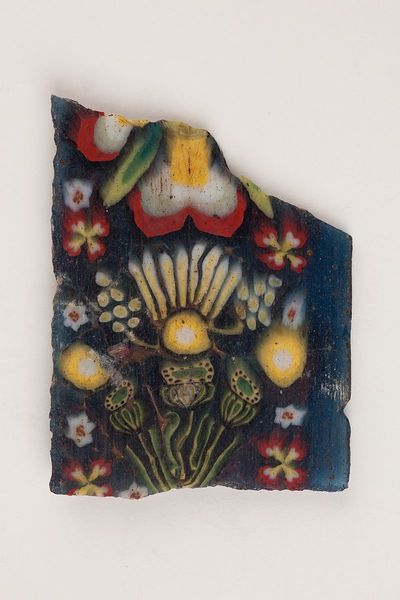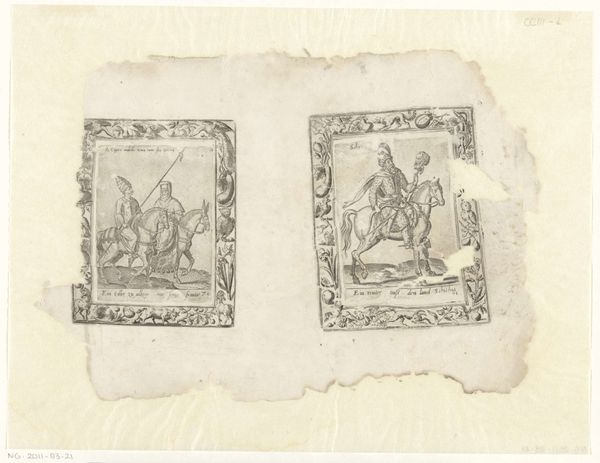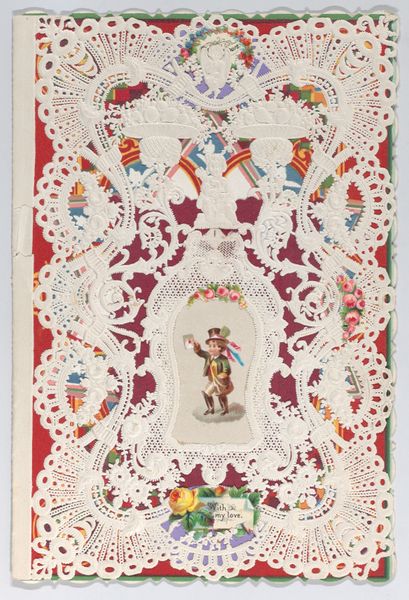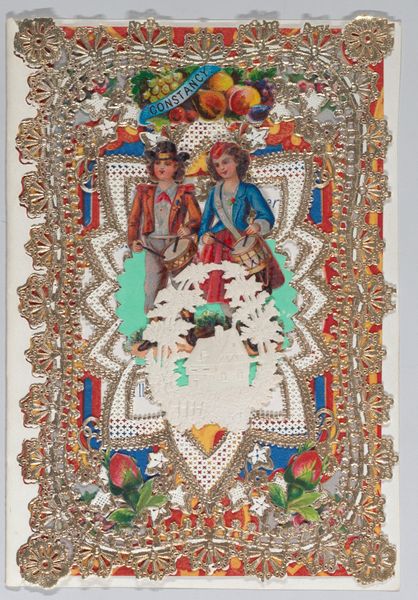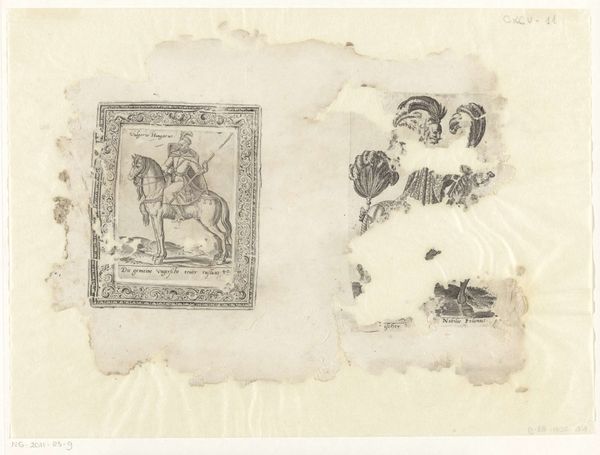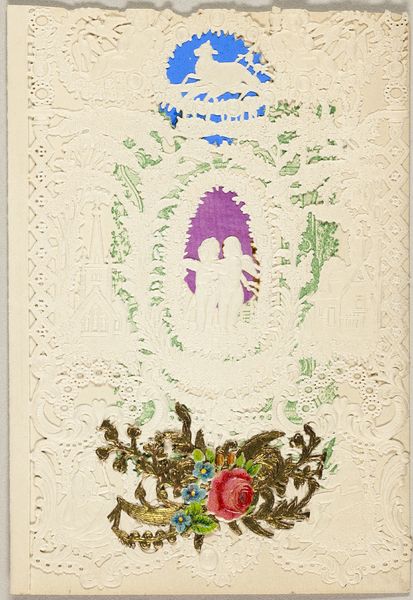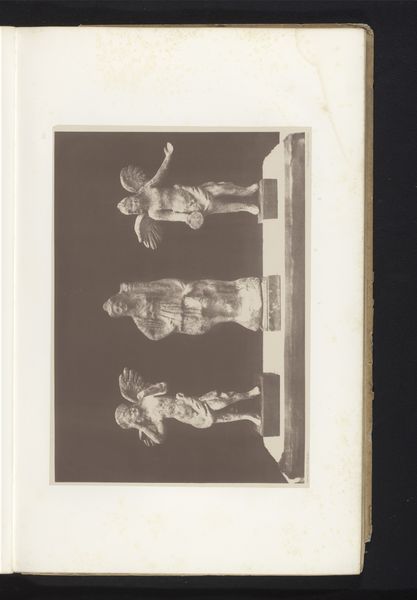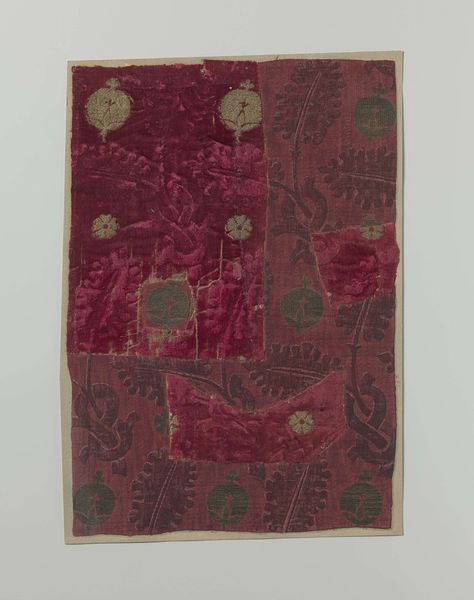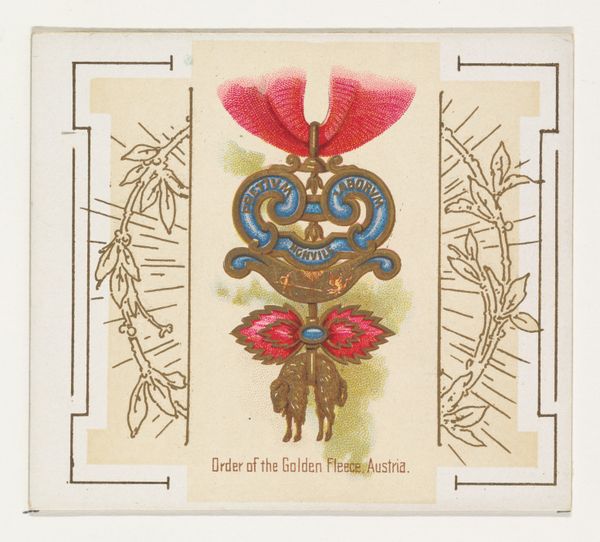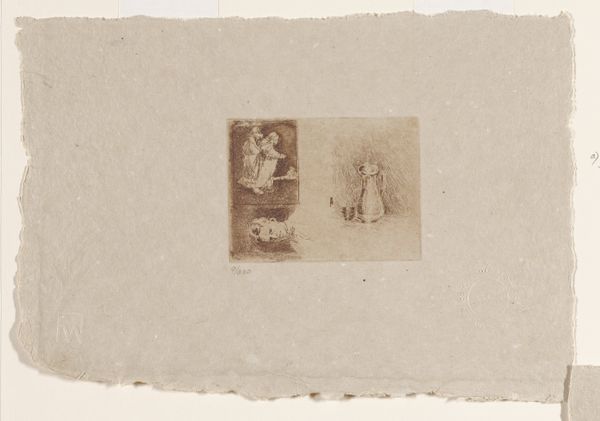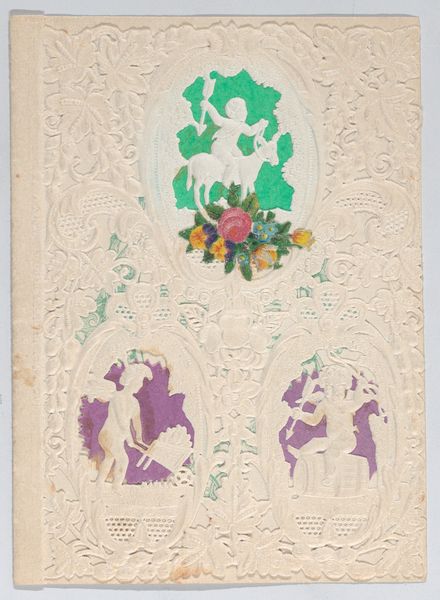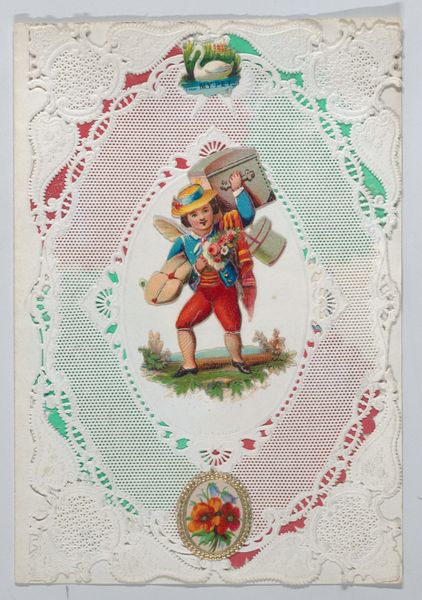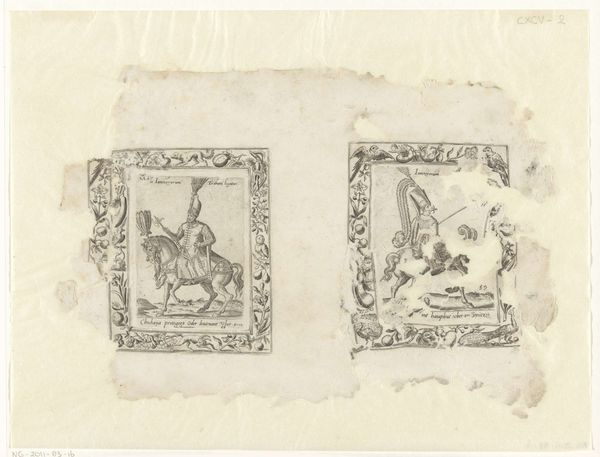
Dimensions: Width: 2 9/16 in. (6.5 cm) Length: 3 11/16 in. (9.4 cm)
Copyright: Public Domain
Curator: Welcome. We are standing before Kate Greenaway's "Valentine" created in 1877. It's a charming watercolor and ink drawing, embodying the artist’s signature style of delicate, nostalgic illustration. Editor: My initial reaction is that of an almost cloying sweetness, a world rendered in the most delicate of hues, it feels utterly removed from the grit of the late 19th century. Curator: Precisely. Greenaway cultivated a highly stylized aesthetic, focusing on idealized childhood and historical revivalism. Look closely at the application of color; the translucent layers build a sense of depth, yet maintain an airy, dreamlike quality. Editor: But that dream is, in my opinion, deeply coded with the values of the Victorian era. The emphasis on innocence, the carefully constructed gender roles—these children are visual representations of societal expectations and limitations placed on them by an era wrestling with rapid industrialization and anxieties about preserving traditional norms. What about looking at Greenaway as challenging conventional art ideals of her time? Curator: That is a thought provoking idea. I was mainly interested in the formalism and composition that creates narrative. Take the fringe around the pieces. It encloses a tiny, precious moment. And within, the carefully posed figures interacting across separate planes, mirroring themes of connection. Editor: What if that 'connection' is built upon the power dynamics of age, class and gender? Do those children have freedom, or are they carefully placed puppets on a sentimental stage? Greenaway’s popularity intersected with debates around education and the rise of children's literature. It’s necessary to address whether Greenaway’s vision perpetuated limiting views about the ideal childhood at a time of intense social change. Curator: You raise a crucial question. I admire her technique while understanding it must be examined critically, questioning how its beauty participates in constructing, as you say, cultural expectations. Editor: Indeed. Examining the aesthetic qualities alongside a socio-political interrogation gives the work an enduring resonance today, far beyond simple nostalgia. Curator: This conversation really illuminates how approaching the artwork with an understanding of its structural elements coupled with its wider historical context yields fresh ways of appreciation. Editor: I am excited by new perspective, seeing her work as not only artistically notable, but also a document worthy of deeper understanding, ripe for analysis in ways that invite contemporary dialogue.
Comments
No comments
Be the first to comment and join the conversation on the ultimate creative platform.
